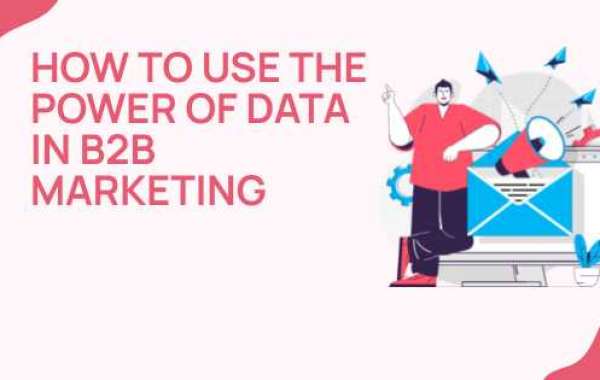First-party data is obtained directly from the company and is the most effective and reliable. Third-party data, on the other hand, is purchased from a provider external to the company.
The goal of this article is to help you make the right decisions about your data and understand how best to use it. Read on to find out more!
B2B marketing: leveraging data to gain insights into prospects
An incredible amount of useful information is hidden in the so-called first-party data for the development of a successful b2b marketing strategy. These insights can be used to improve the performance of marketing and sales activities.
Here are some examples.
Example #1
You notice that 50% of users lose interest after a specific stage of the sales process. It means that something is driving potential customers away and directing them elsewhere. By examining salespeople's actions and the information they share or don't share, you can glean important insights and create an action plan to improve your conversion rates.
Example #2
Find out that a b2b website page gets a lot of traffic. By serving a variety of linked and unlinked content on that page, you can fine-tune your lead generation and demand generation strategies to drive more marketing qualified leads (MQLs) into your sales pipeline.
Example #3
Looking through the last 10 blog articles, you notice some interest in a specific topic. By adjusting your content marketing strategy to focus on that particular topic, you can attract more potential customers and get them to strike up a conversation with your sales team.
The key to using data to drive results from your b2b marketing plan is not the data itself, but the process of discovering the information.
Knowing what to look for can be tricky. It takes practice, experience and a certain skill to be able to come up with something really interesting.
Personalize b2b content and customer experiences
One-to-one marketing campaigns are much more effective than one-to-many ones. But historically, marketers have preferred to run one-to-many campaigns because they see them as more effective.
However, today's prospects are more inclined to interact with a more personal type of communication, making one-to-one campaigns increasingly necessary.
First-party data is key to running these personalized campaigns, and that means more than just a "Dear Simona" at the start of an email. It means knowing Simona's role within the company, knowing her company's industry, being able to provide information-rich context, and understanding the specific challenges associated with her role and her industry.
It could also mean creating content that is directly addressed to you and providing personalized experiences in your browsing on the web, such as videos and ad hoc content.
None of this can be done without first-party data.
Improve the purchase path of customers and prospects
The company that creates the best experience for potential customers will be the most successful.
The more you can understand and decipher the buyer journey, the better you can create a noteworthy experience along the way, and the more effective your marketing and sales processes will be.
Data is key to creating this experience. This means not only personalizing it, but also providing appropriate and contextualized content.
Sales reps who can see exactly which website pages their prospects have viewed can initiate conversations that focus on their specific problems and concerns, providing additional information that helps them feel heard.
If customer service personnel have access to similar data or online conversations, they can quickly figure out what the issues are, propose content, follow up, and turn a negative experience into a positive one.
First-party data: the challenges
The main problem with first-party data is getting it.
Prospects and customers are very privacy conscious and less likely to share personal information. Modern tools also increasingly allow you to act anonymously, making data less and less useful.
However, if you manage to create a relationship of trust with prospects, they will be willing to share their data and continue to receive communications from the company.
Earning the attention and trust of potential customers is certainly not easy, but it is the only way forward.
Possible problems with third-party data
As regards so-called third-party data, however, one of the main challenges is its dubious quality. Purchasing data from third-party providers can seem like a great shortcut, being able to get names and email addresses for a penny. The problem, however, is being able to then use this data to obtain valuable leads for the sales team.
Email lists often fail to achieve even 50% deliverability. Or even worse, these lists are full of spam addresses, which could cause big problems like suspension of marketing automation or the inability to send emails or access the Internet.
The use of third-party data should not be taken lightly.
There are no shortcuts. Reaching out to prospects, starting conversations with ready-to-buy users and getting these same people to say yes means putting into practice a complex set of actions that must take place in an orchestrated way.
Buying email addresses won't work. It takes time and patience to create data-driven b2b marketing strategies that actually work.
Bonus Tip:
Creating a Wikipedia page for a business can help in marketing by providing a platform to promote and share important information about the business. It can serve as an online encyclopedia that can be used to highlight key facts and figures, as well as provide an overview of the company's products and services. Additionally, a Wikipedia page can be used to build trust, as potential customers and clients can get a better idea of the company's reliability, credibility, and reputation. Moreover, a Wikipedia page can also be used to direct traffic to the company's official website and social media channels, thereby driving more leads and conversions. Furthermore, a Wikipedia page can also improve the business's visibility and search engine rankings, as the platform is considered a reliable source and is frequently crawled by search engines.




